Canon celebrates significant milestones
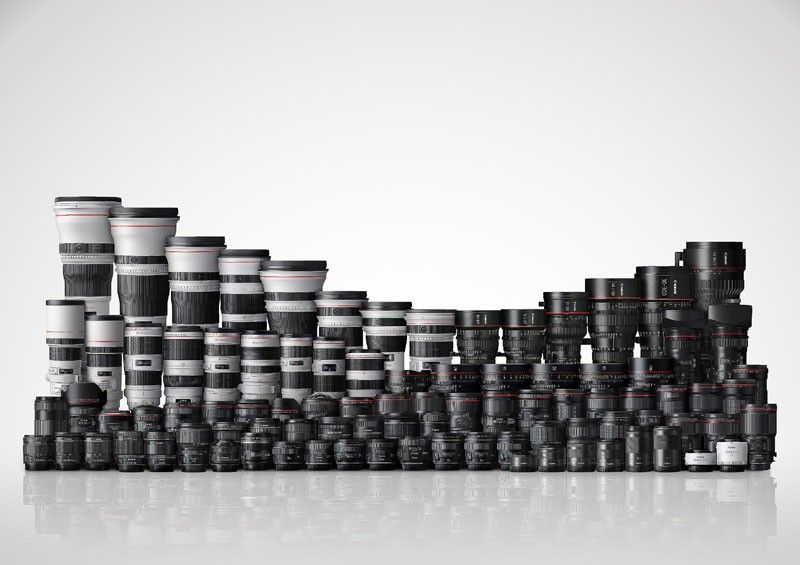
“We are developing a camera for every need of our consumers,” said Go Tokura, executive officer and chief executive, Image Communication Business Operations Group in Canon, Japan. “One day we will make camera’s that are small enough to follow our consumers around in their homes, offices and even as they travel around.”
But to add to this Canon will continue to develop cameras for the professional photographers and photographers at heart who look for the one in a lifetime shot that they can be proud of.
As we took a tour around the main office of Canon in Tokyo it was evident that that had much pride in what Canon chairman and CEO Fujio Mitarai had to say about Canon:
“2017 marked Canon’s 80th anniversary. It was an epoch-making year in which we continued Phase V of our Excellent Global Corporation Plan (2016 – 2020) and established a strong foundation for the grand strategic transformation of our business portfolio.
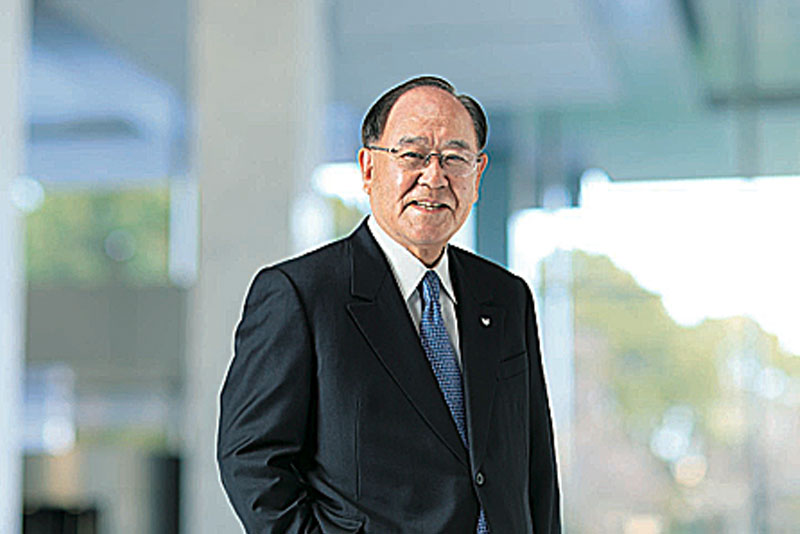
Canon CEO and chief executive officer Fujio Mitarai
“Between our existing businesses, which have continually supported us with solid earnings, and the expansion of our new businesses that will drive future growth, our sales exceeded four trillion yen ($36.1 billion) for the first time since the financial crisis of 2008. Furthermore, for the first time in four years, we registered an increase in both sales and profits.
“Toward achieving our grand strategic transformation, we are focused on our four new businesses of commercial printing, network cameras, healthcare and industrial equipment. Through collaboration with Group company Océ, our commer- cial printing business is growing to meet the diversifying needs of the expanding digital printing market. In our network camera business, which is growing mainly in the areas of security and surveillance, we are achieving synergies with Group companies Axis and Milestone Systems, enabling us to propose network visual solutions based on a combination of superior technologies in such areas as video content analysis. Our work in healthcare centers on Canon Medical Systems, which joined the Canon Group in December 2016 as Toshiba Medical Systems and adopted its new name in January 2018. We are expanding our business in diagnostic imaging, healthcare IT and in-vitro diagnostic systems. Lastly, in our industrial equipment business—which includes Canon Tokki, the market leader in Organic LED (OLED) panel manufacturing equipment—we are combining our strengths from across the entire Canon Group to develop new manufacturing systems that will play a vital role in next-generation manufacturing.
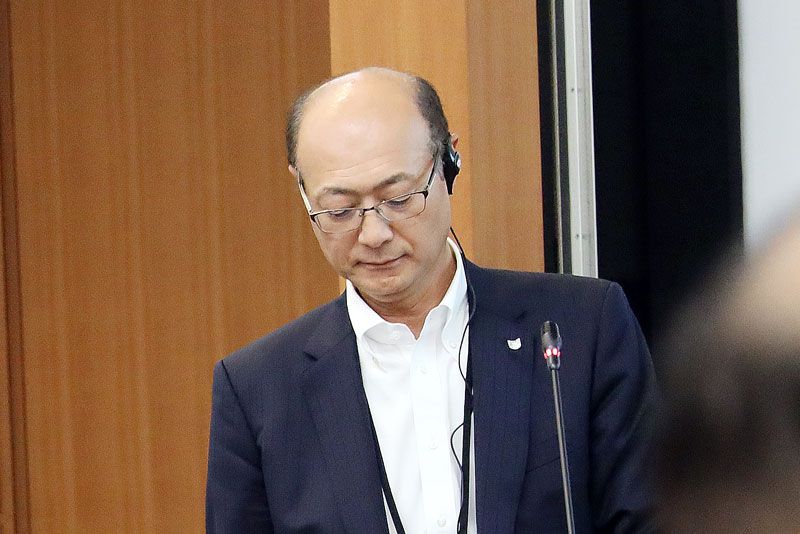
Canon chief excutive officer Go Tokura at the opening briefing of Canon in Tokyo
“With the advancement of such IT technologies as the IoT, big data and AI, the world is on the cusp of a revolution in product usage and manufacturing methods. While continuing to pursue innovation in such longstanding business segments as cameras, inkjet printers and office multifunction devices, we are striving to improve productivity through automation and in-house development of software.
“Since Canon’s foundation, we have continued to pass down our corporate DNA of enterprising spirit and the San-ji, or ‘Three Selfs,’ Spirit. And under our corporate philosophy of kyosei, we seek to become a truly excellent company that is admired and respected around the world. Toward this end, we will continue working together as a Group to become an excellent global corporation of the highest order.”
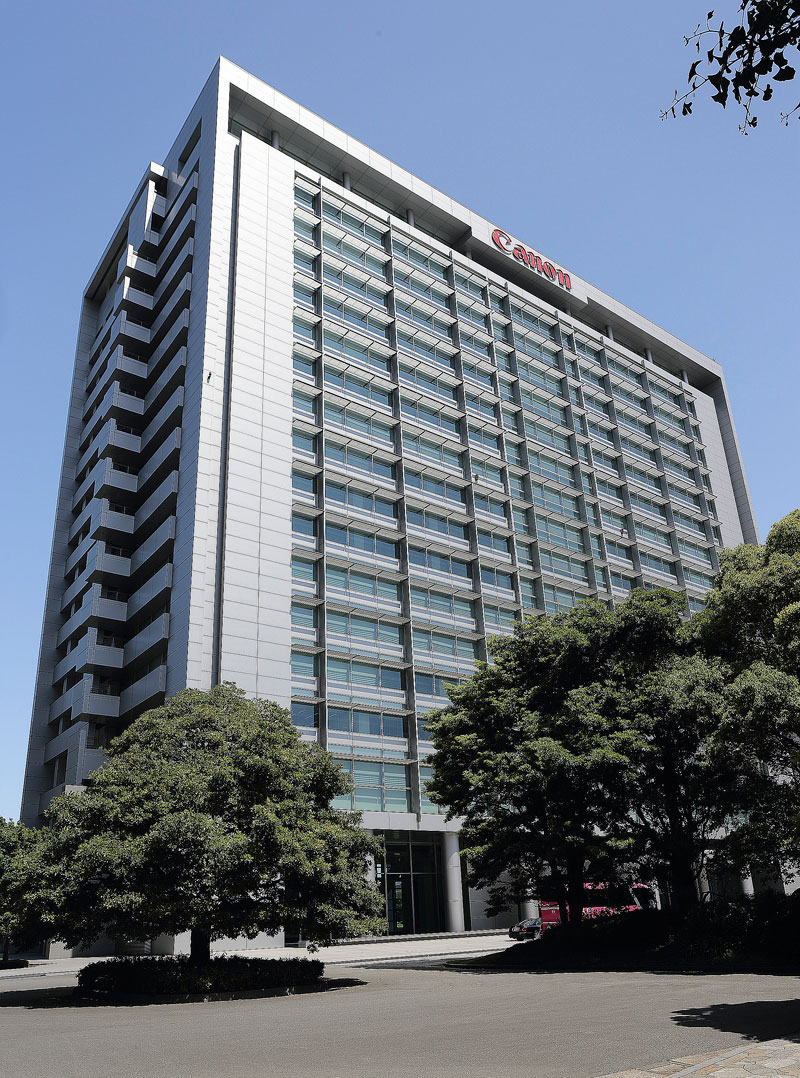
Canon headquarters in Tokyo, Japan
Pride in company
Canon Inc. offices in Japan are a sight to behold. With the latest that technology has to offer, I was in awe of their facilities when I visited last week.
It is no wonder that Canon has reached two major production milestones — a cumulative total of 90 million silver halide (film) and digital interchangeable-lens cameras and 130 million1 EF-series interchangeable lenses in 2017. An EOS 5D Mark IV was the 90 millionth EOS Series camera produced, while an EF16-35mm f/2.8L III USM became the Company’s 130 millionth interchangeable lens.
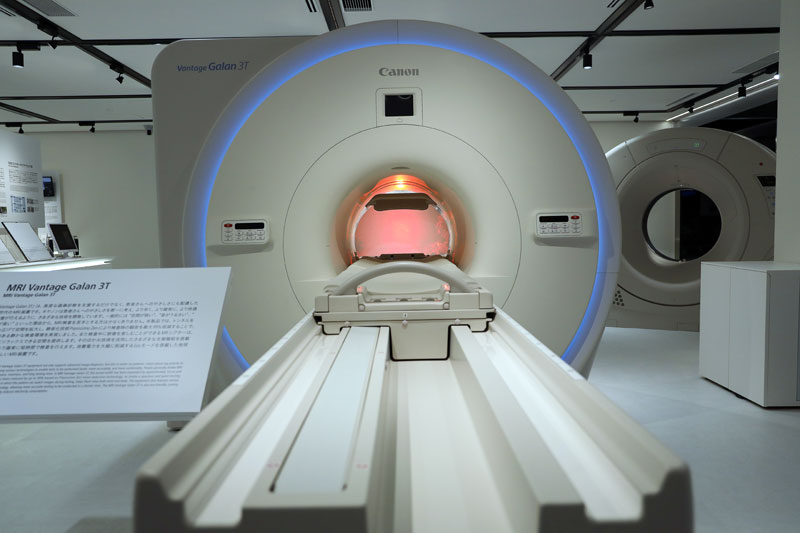
Canon MRI will have visuals of nature for patients
Canon’s EOS system debuted alongside the EF series of interchangeable lenses in March 1987 as the world’s first fully-electronic mount system for silver halide AF SLR cameras.
We were told that over the years both product lines have continued to expand, gaining support among users ranging from first-time users to professionals. Production accelerated in the early 2000s with the spread of digital SLR cameras. What’s more, Canon’s interchangeable-lens digital cameras have maintained the No. 1 share of the global market for 14 consecutive years since 2003.
Taking shots of Tokyo
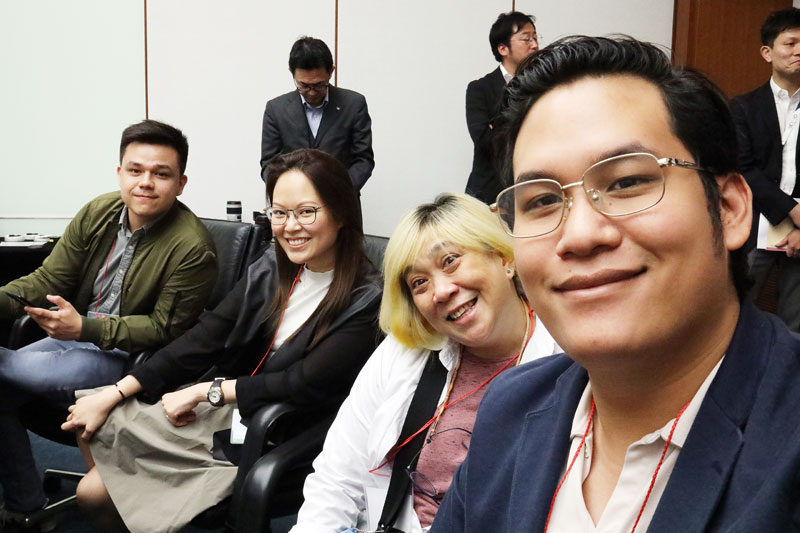
Philippines present: Daniel Morial of Gadget Match; Roseann T. Go of Canon Marketing Philippines, The author Kathy Moran of Philippine STAR and Joey Maceda of Yugatech
It was then with much joy that we were allowed to use the latest Canon Camera, the ground braking EOS R — which is their first full-frame mirrorless camera. I share with you here in this page some of the shots of Tokyo I took with the camera. I must quickly add that this EOS R was easy to carry around and not too heavy as I lugged it around — during the two trips to the Canon main headquarters in Tokyo and, a first for media, a factory tour in Utsonomiya about two hours by bus away from Tokyo.
Since its conception, the EOS series has continued to develop revolutionary technologies under the series concept of “speed and comfort.” With the advent of the digital age, the concept was expanded to include “high image quality.” Canon has since developed in-house every key device — CMOS sensors, image processors and interchangeable lenses — employed in the EOS series. Particularly noteworthy are the Company’s EF lenses, which lead the industry in sales and feature such world-first 3 innovations as the Ultrasonic Motor (USM), Image Stabilizer (IS) technology and a multi-layered diffractive optical (DO) element.
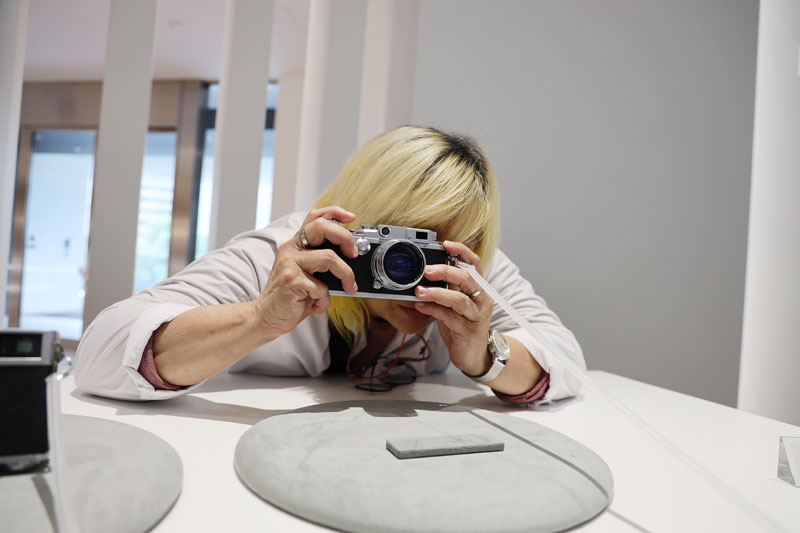
Author Kathy Moran with the fist camera Canon made in the 1950s
Canon will continue to strengthen and expand the EOS series and EF lens lineups by refining its imaging technologies, centered on optics, and by striving to combine stills, video and network technologies. The Company will also continue its pursuit of manufacturing products that are both attractive and reliable, while also contributing to expanding the photographic and video imaging culture.
The EOS series of interchangeable-lens cameras began with the EOS 650 SLR camera, released in Japan in March 1987, that not only featured the world’s first electronic lens mounting system, but also fully digitized communication between the camera body and lens to realize a new generation of autofocus technology.

TheTokyo Tower at dusk with an EOS R
As silver halide cameras boomed, Canon launched several models covering a wide range of user needs, including the EOS-1 in Japan in 1989, aimed at professionals, and the EOS Kiss (EOS Rebel XS or EOS 500 in other regions) in Japan in 1993, which achieved a compact, lightweight design and greatly expanded Canon’s user base. Then in 2003, during the early years of the digital camera age, the Company released in Japan the ground breaking EOS Kiss Digital (EOS Digital Rebel or EOS 300D Digital in other regions), an entry-level digital SLR camera that realized a compact, lightweight body at an affordable price. This move would trigger a massive expansion of the camera market, with Canon claiming the overwhelming lead in market share that same year. With the later release of the EOS-1D Series for professionals and the EOS 5D series, which helped popularize video capture using SLR cameras, Canon has continued to release epoch-making products that have enabled the Company to maintain the No. 1 share of the global interchangeable-lens digital camera market for 14 consecutive years from 2003 to 2016.
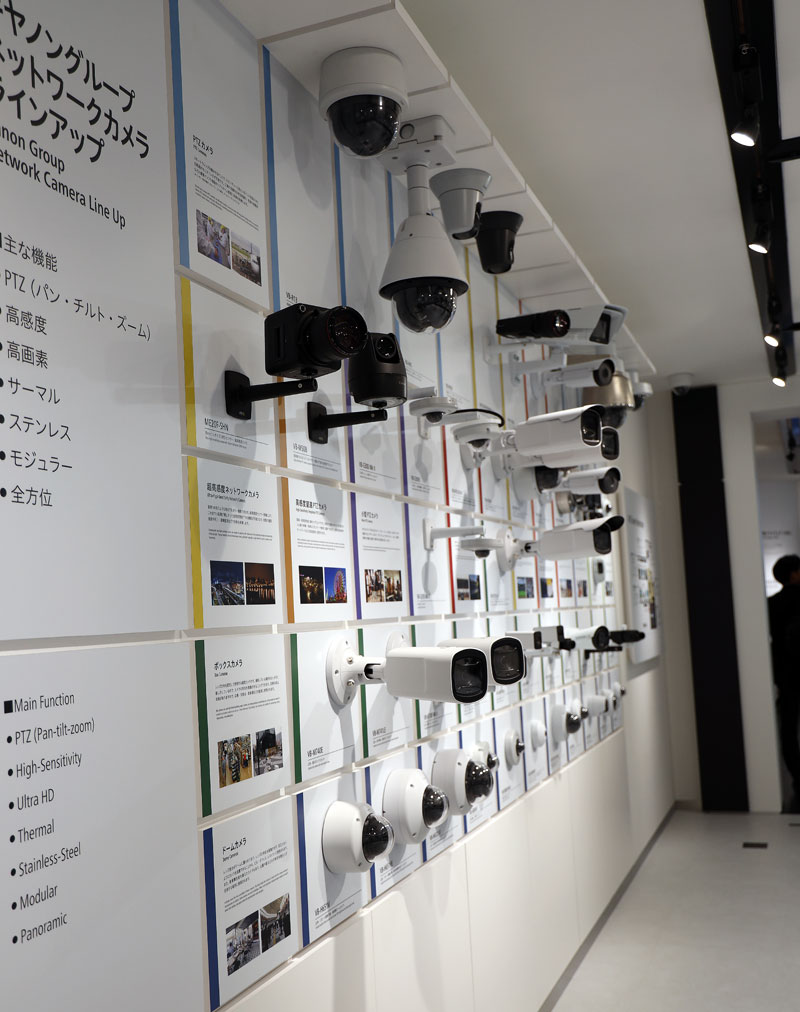
Canon prided in lenses is evident in tour display at main headquarters
Since the release of the first EF lens, launched alongside the EOS series in 1987, Canon has produced such EF lenses featuring world-first technologies as the EF75-300mm f/4-5.6 IS USM with IS in Japan in 1995, the EF400mm f/4 DO IS USM with a DO lens in Japan in 2001 and the EF24mm f/1.4L II USM, treated with highly antireflective Subwavelength Structure Coating (SWC) in Japan in 2008. What’s more, in 2015 Canon released in Japan the EF11-24mm f/4L USM, the world’s first1 ultra-wide-angle zoom lens to achieve an 11 mm focal length.
Today, Canon boasts 93 lenses in its rich EF lens lineup that comprises such lenses as an ultra-wide-angle 8 mm focal length lens, an 800 mm focal length super-telephoto lens and EF Cinema Series lenses for video production. With a wide selection of lenses for every purpose including zoom lenses, IS-equipped lenses, fast-aperture lenses, macro lenses and even the TS-E tilt-shift lenses, Canon is well-positioned to meet the needs of various users.
- Latest





























